The Adivasis Strike Back
Behind the anti-conversion violence in Bastar is a fight for tribal identity
 Siddharth Singh
Siddharth Singh
 Siddharth Singh
Siddharth Singh
 |
07 Apr, 2023
|
07 Apr, 2023
/wp-content/uploads/2023/04/Adivasis1.jpg)
A destroyed Christian prayer hall at Bandapal village in Chhattisgarh’s Narayanpur district (Photos: Govinda Sonkar)
WHEN SUSHILA DIED DUE TO HAEMORRHAGE during a complicated pregnancy late last year, she was buried under what can only be described as tumult and turmoil. Sushila had become a vishwasi or a believer—as Christian converts are called in this part of Bastar—a while before her death. Soon after her death, people in her village—Palna—refused Sushila a spot for burial. She was buried in a grave in the family’s personal burial patch. But within hours the grave was dug up and her body removed even as hundreds of villagers gathered in what became a violent upsurge against conversions. The district administration quickly removed her corpse and buried her in a cemetery in Kondagaon. No one from her family was present during the second burial and they don’t know her resting place.
The opprobrium that ensued forced the Bhupesh Baghel government to intervene in the matter. The state human rights commission, too, ordered the Kondagaon police to conduct an inquiry. By the time the case began to cool off, a spate of violent incidents had begun to be reported from the region. By the end of December, two districts—Narayanpur and Kondagaon—had witnessed migration of converts to Narayanpur town for their safety. Since then, there has been a number of incidents of vandalism against prayer halls, of people being refused the burial of the dead in villages that were until the other day peaceful and, in general, an atmosphere of animosity against converts has pervaded the area.
Seen from the vantage of New Delhi, the optics looks bad and only confirms the worst suspicions of many observers: that Hindutva is finally taking a toll on India’s social fabric. But optics is one thing, reality something entirely different and messier. In distant, interior villages of Narayanpur, Kondagaon and Kanker districts of Chhattisgarh, there is another perspective: Adivasi assertion of their identity that is increasingly seen as under threat from conversions.
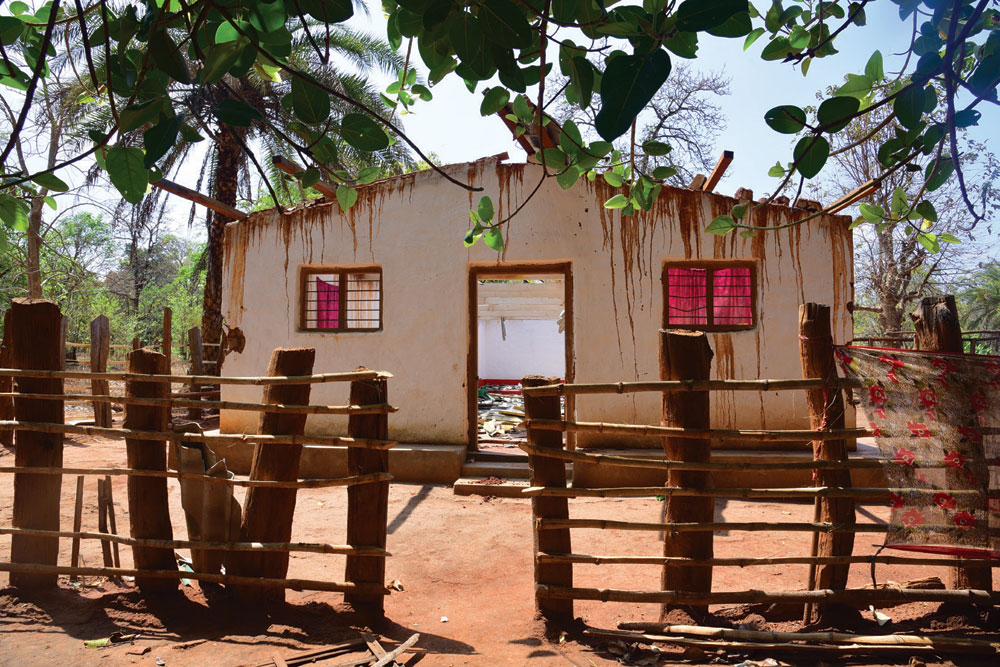
Seen from this perspective, what transpired in Palna and elsewhere takes on a very different hue. It is worth noting that in the same patch of land where Sushila was buried lies another grave—that of her mother-in-law and one that remains unmolested. The other woman, too, was a convert. But when she died back in 2016, there were no protests and no violence was reported. In the welter of reports (and mis-reports), no one has bothered to ask what has changed in these years to prompt violence against converts.
In these years, the number of vishwasis has gone up steadily even as Christian religious festivals are observed with gusto and gaiety. This has not gone down well with the shy and quiet Gond Adivasis of the region. The rising number of converts has led to disquiet and, at times, even violence.
How a single conversion could have a cascading effect can be best understood from the story of Amar Singh Salam, a youth in his twenties from Modenga, a village not far from Benoor, the epicentre of the anti-conversion agitation in the region. In Modenga, Salam shows a locked structure that does not resemble a church in any way. Yet, on December 27, a large number of his fellow villagers attacked it. The building, with three doors, housed religious paraphernalia and also served as a prayer hall. Since the day of the attack, the building has remained shut.
Salam tells Open that the property belongs to his father who allowed it to be used as a prayer hall. How a private property was converted into a religious structure is a fascinating story in its own right.
“My father did not agree to my becoming a vishwasi,” says Salam. “He and my mother gave me dire warnings that I would be disinherited. But by that time I had made up my mind,” he says. In Salam’s telling, he converted after a visit to the house of his cousin who had converted some years earlier after a bout of illness. This cousin, in turn, ended up persuading her parents for a change of faith. After some time, Salam, too, turned. When asked as to what persuaded him, he says it was his cousin. “She told me about this new faith and its possibilities, including education,” he tells Open in Modenga. It was just a matter of time and ultimately his parents, too, turned. Salam spent a year at a ‘Bible college’ in Chennai but returned. “The classes were in English and I could not follow what was being taught.” That failure has not deterred him in the propagation of his new faith: his father agreed to part with a part of the property that was turned into a prayer hall.
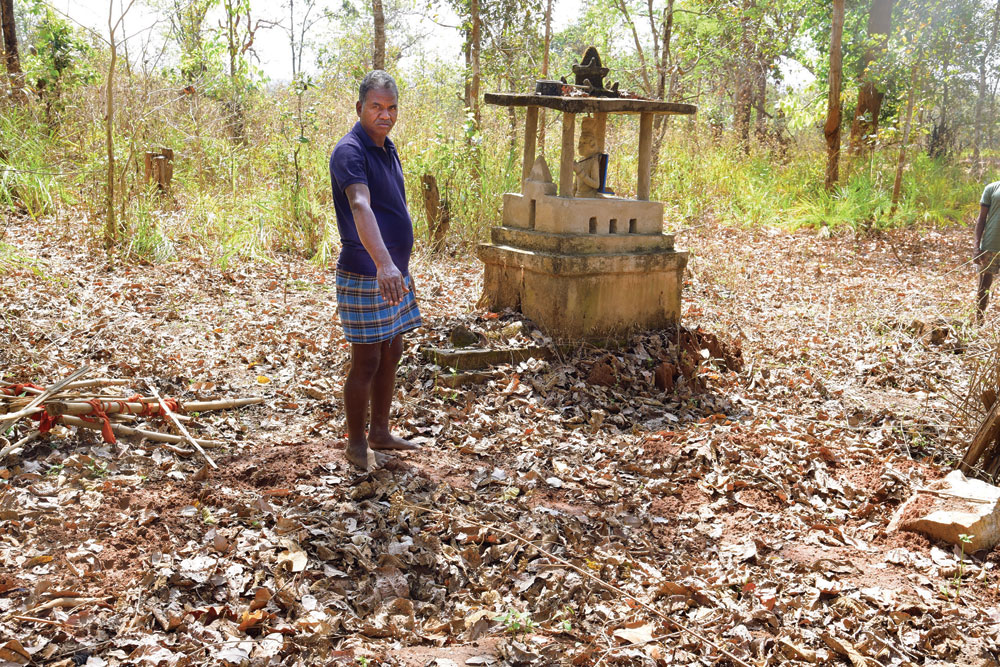
The number of vishwasi families in Modenga is not large. By one estimate, there are around 150 households. (Census 2011 pegged the figure at 90). Until about seven or eight years ago—when the vishwasi numbers began to go up—there were just a handful of Christian converts. In these years, the rising number of converts has created conditions of friction in an area where identity politics had been absent. This has probably changed forever. In Modenga, for example, some 15 households—the exact number of individuals is hard to estimate—have undergone ghar wapsi (or homecoming) since clashes seen in late December.
If the end results—the violence, the friction in villages and the trend towards identity politics—are clearly visible, the undercurrents leading to the situation are hotly contested. The area where friction is most intense lies in the interior of the region that straddles Narayanpur, Kondagaon and Kanker districts. Unlike the district headquarters in Kanker or Narayanpur—that remain quiet—these areas are now subject to almost daily contestation. The explanations also vary. Activists in Narayanpur and Kanker say that much of the violence is due to the activities of organisations associated with the Sangh Parivar and others like the Gayatri Sansthan, a religious outfit that is active in the area. But change the location where you ask these questions and the answer changes dramatically. In Modenga, one of the sites of actual violence, the answer given by Amar Singh Salam is revealing.
“The group of people, who attacked us on December 27 and later, in February, was largely from our village. These people believe in Burha Dev (the Adivasi deity),” he says, even as he denied that Gayatri Sansthan activists were present during the protests and attacks. He did not change his answer even after being asked repeatedly about the presence of Hindu activists.
Even activists admit that more is at work than mere Hindu activists trying to stir up trouble in restive districts of Bastar.
Keshav Ram Sori is an activist who is one of the leaders of DISHA, an NGO based in Kanker active in the area. Sori is one of the members of a fact-finding team that inquired into the anti-Christian violence seen in Narayanpur in December. He met Open in Kanker at his office and detailed the situation and the factors leading to violence and counter-mobilisation by Adivasis.
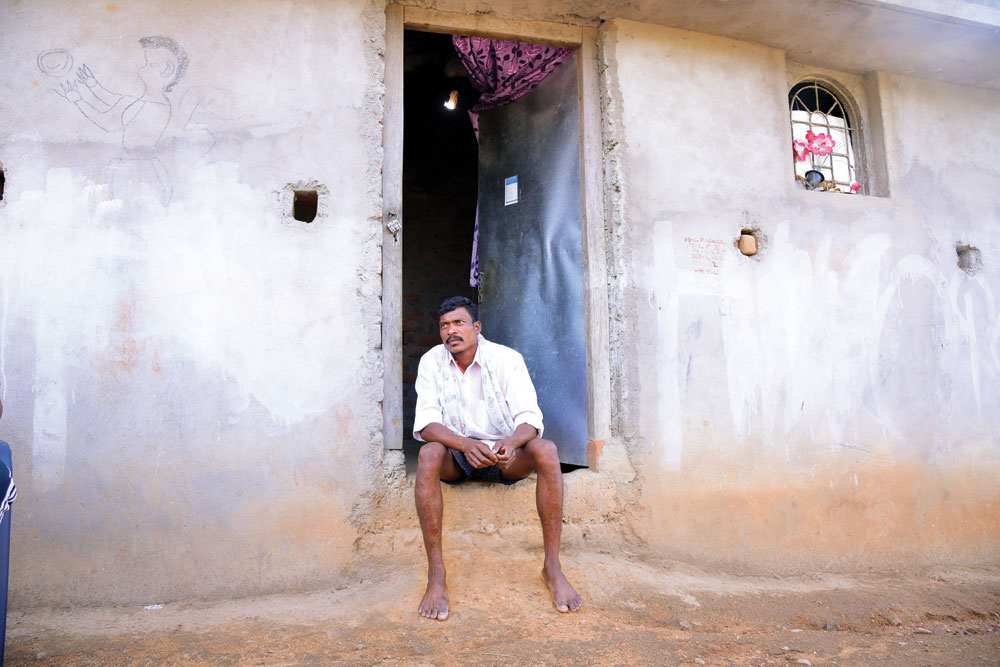
In Sori’s analysis, much of the recent turmoil is due to politics. Elections in Chhattisgarh are due later this year. “What is going on is purely political,” he says and adds that, “BJP is in a hurry to capture a vote bank. Be it ‘de-listing’ or any other measure against Christians or Ram Rajya or whatever, these are the BJP’s issues.” De-listing refers to the demand by some organisations that Adivasis who have converted clearly state their religion instead of continuing with the present situation that allows them to reap the benefits of affirmative action even after they have changed their religion.
While Sori’s political preferences are clear—he does not favour the Bharatiya Janata Party (BJP)—analytically, he understands the situation quite clearly. For example, he notes that while rapid Christian penetration in the area has led to anxiety and violence, “creeping Hinduisation” has not met with the same resistance. He contrasts the rapid increase in the number of Christian converts—mostly from evangelical denominations—with the “slow, almost evolutionary, pace of Hinduisation”. Perhaps what is most damaging to Adivasi identity is the evangelical insistence that Adivasis stop following their traditional practices and rituals, a condition that is deeply corrosive to the Adivasi psyche. Christian activists admit as much even if they don’t say that in clear terms.
HIS NAME IS different but if one listens to the story of Phul Singh Kachram, he could very well have been a character straight out of VS Naipaul’s Beyond Belief: Islamic Excursions Among the Converted Peoples. Born an Adivasi, later a vishwasi, and now an activist trying to protect the rights of converts, Kachram’s story outlines the perils in the process of changing identities. As a boy herding animals in his village on the outskirts of Narayanpur, Kachram was picked up by a pastor who offered him an education. Soon enough, the convert was sent for advanced education and is now among the highly educated people in his village. (He boasts a Master of Arts.) But somewhere he abandoned his new faith: he does not attend mass, nor does he participate in direct church activities. He has, however, not reverted to his old faith—belief in Burha Dev and animism—and continues in a limbo-like situation, neither here nor there.
He also leads an uneasy life, politically speaking. It is not easy to be an activist of any kind—Christian, Hindu, or one for human rights—in Narayanpur. The district is one of the more ‘difficult’ jurisdictions in Chhattisgarh. Straddled by the vast Abhujmarh (“the unknown forest” in Gondi language) forest all the way to Gadchiroli in Maharashtra, Narayanpur is also a major Maoist redoubt. Now, on top of the insurgency, identity politics seems to have gripped it as well. Since the violent events in December, the district administration has clamped down hard on anyone seen to be stirring up trouble. From that perspective, Kachram is not exactly in the good books of those who matter.
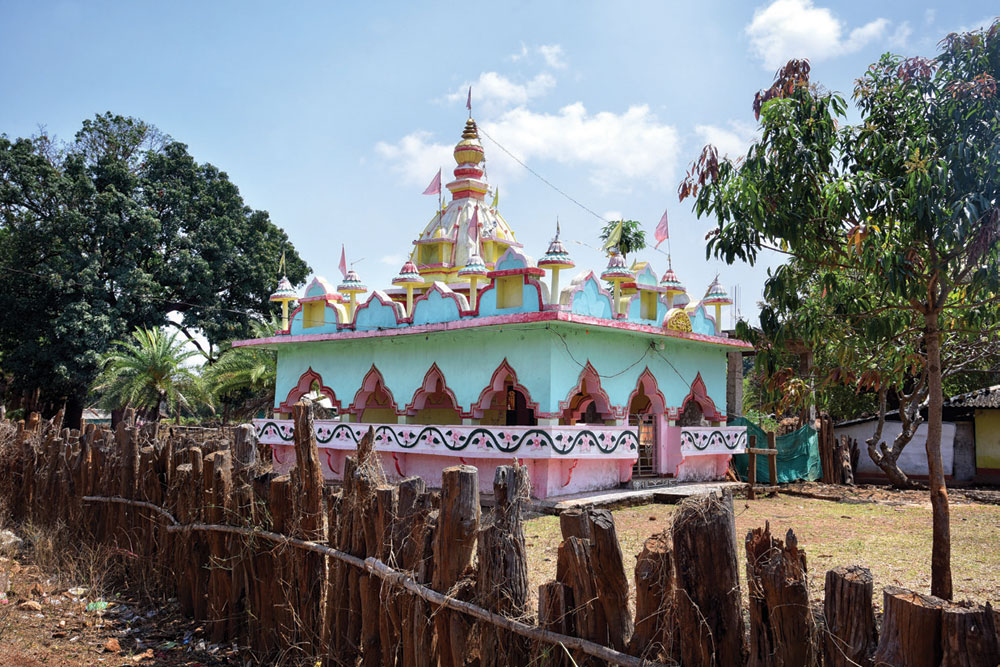
These days he spends his time quietly even as he tries to keep up with activism. He speaks to Open in an office located at one end of Narayanpur town on the road that goes to Antagarh in Kanker district. It is night time and Narayanpur is witnessing its routine power cuts. “It is better this way, safer from prying eyes,” he says. Much has changed since December. “There is pressure from everyone. The Janjati Suraksha Manch—the organisation spearheading the ‘de-listing’ campaign—people create problems whenever we try to raise awareness about our religious rights. The district administration, too, does not want any trouble,” he says while outlining steps to safeguard converts.
Perhaps what is most damaging to adivasi identity is the evangelical insistence that adivasis stop following their traditional practices, a condition deeply corrosive to the adivasi psyche. Christian activists admit as much
“We have to be careful. We have told our people not to dissociate from traditional Adivasi functions,” says Kachram. “We have told them that you should participate in political and social gatherings as well as toning down religious observations,” he adds. Large crosses on prayer buildings, avoiding celebrations for baptism and naming ceremonies and—most importantly—avoiding religious burial practices distinct from Adivasi practices are now routinely followed.
All this is in the nature of a rearguard action and may buy peace for a while but the damage to Adivasi society has already been done. Take burial practices, for instance. As the case in Palna shows, the resentment over this issue is particularly strong. Traditionally, Gond Adivasis bury their dead. But with the adoption of Christian practices, some key elements have simply disappeared from these rituals. For example, after an Adivasi dies, mahua liquor is poured, followed by other ceremonies. In the Christian adaptation, a simple prayer is recited and a burial takes place immediately afterwards. In contrast, the Adivasi ritual is more elaborate.
Other contradictions abound and are emerging slowly. Take the choice of marriage partners. In the traditional Adivasi system, one cannot marry within one’s totemic lineage. But among converts, there are no such restrictions. The result is a slow wrecking of the social fabric. The entire sacral sequence of life—birth, marriage and death—has been upended. Far from BJP’s aggressive quest for a vote bank, it is this train wreck of Adivasi society that has provoked anxiety, resistance and violence.
THE MOST ELUSIVE quarry of this story, however, is the ‘Hindu side’, allegedly the driving force behind all that has gone wrong in this part of Bastar. The leader spearheading the campaign against conversions in the area is Bhojraj Nag, an Adivasi and a former MLA from Antagarh. He was extremely reluctant to meet Open when reached out to at his house in Antagarh and, in the end, refused to do so. His aged mother politely said that her son had been unfairly victimised. “He is a god-fearing man and is busy with his daily prayers,” she says when asked about his whereabouts. For all the opprobrium attracted by the ‘de-listing’ and anti-conversion campaign, there is deep pessimism on the Hindu side.
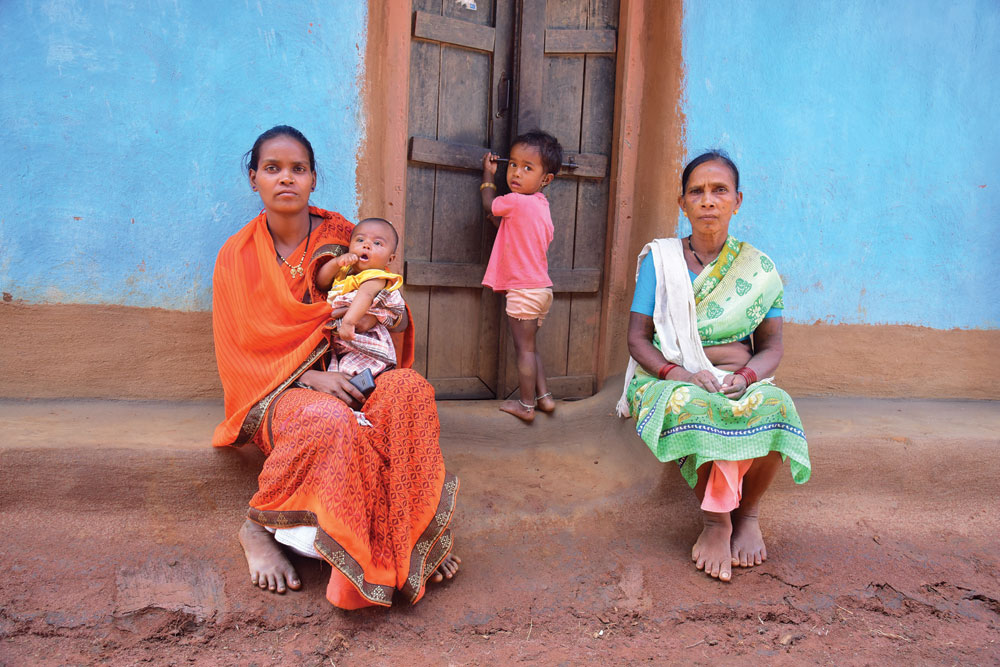
Virendra Shrivastava, a former state chief of the Vishva Hindu Parishad (VHP) in Chhattisgarh, now a BJP functionary, is a close observer of what has transpired in the region. He says it is very difficult to stem the tide of conversions.
“Don’t look at the process in isolation. The church plans things carefully and meticulously. Matantaran (conversion) does not take place just like that. To begin with, the numbers are small and it takes many years, if not decades, to reach a critical mass,” he says.
“But once a threshold is crossed, it becomes politically impossible for a legislator to stop mass conversions. After all, MLAs have to survive in the political system and soon enough entire districts witness a complete change in religious demography,” he tells Open in Kanker. Shrivastava says these changes have taken place during the tenure of all governments in the state, including BJP’s.
The entire sacral sequence of life—birth, marriage and death—has been upended. Far from BJP’s aggressive quest for a vote bank, it is this train wreck of adivasi society that has provoked anxiety, resistance and violence
What Shrivastava says is corroborated by activists as well. Many note the difference in terms of resistance between conversions in north Chhattisgarh, especially in the Sarguja region, and in Bastar. In Sarguja, the number of converts is large enough to render any attempt at halting conversions futile. In Bastar, the number is still small and that explains the strong pushback.
But as is true of most stories and events that take place in far-flung places in India, a certain gap arises between what is in plain view locally and ‘interpretations’ that arise by the time news travels to big cities. In ‘secular’ places like Delhi, what has happened—and is happening—in Bastar is plain destruction of the religious rights of minorities. But ask any Adivasi in Modenga, Palna, Chiynar and many other places that are hard to find even on a map, it is Adivasis who are re-asserting their identity that is now under threat.

/wp-content/uploads/2025/07/Cover-Shubman-Gill-1.jpg)












More Columns
‘Fuel to Air India plane was cut off before crash’ Open
Shubhanshu Shukla Return Date Set For July 14 Open
Rhythm Streets Aditya Mani Jha